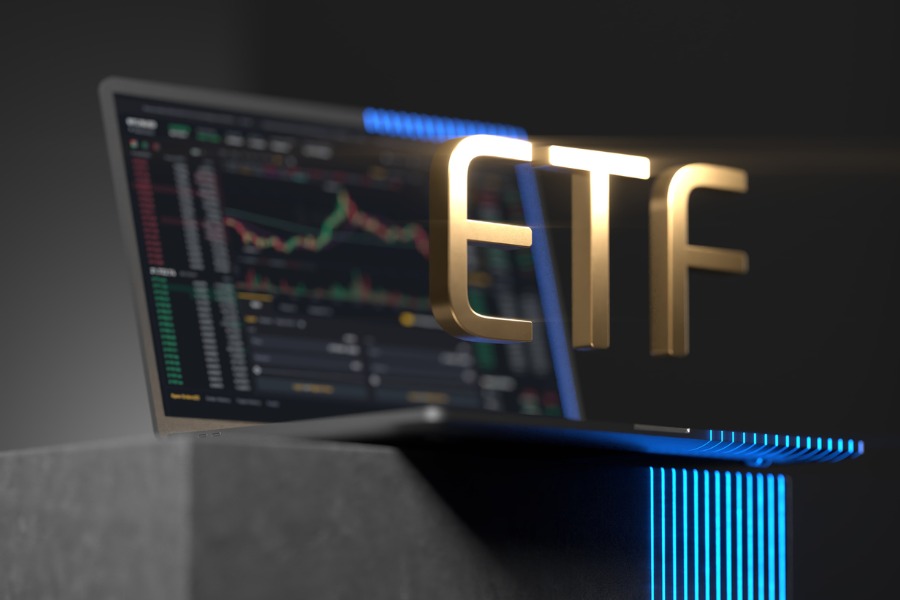

US-listed ETFs reached a significant milestone in September, crossing the $10 trillion mark in AUM for the first time ever, according to two new reports.
Analysts from State Street Global Advisors and National Bank, one of Canada's biggest lenders, reported US ETFs reeled in nearly $100 billion in new assets last month, driven by equity and fixed-income strategies. Cumulative inflows for the year now total $738.9 billion, by National Bank's reckoning, putting the industry well on pace to surpass $950 billion in annual inflows by year-end.
Demand was robust across various asset classes, with equity ETFs leading the charge. SSGA's report found equity ETFs attracted the lion's share of September inflows with $63 billion, driven in no small part by a risk-on rally into large-cap stock ETFs. “[T]he S&P 500 Index is up 21 percent through the first three quarters – its best nine month start since 1997,” said the report by Matthew Bartolini, head of Americas ETF research at SSGA.
While much of this year's bull run in stocks has come from the Magnificent Seven, SSGA noted that the rally has broaded as an equal-weighted gauge of the markets has beaten out its cap-weighted counterpart by 5 percent over the past three months.
Meanwhile, bond ETFs experienced record-setting inflows, driven by the Federal Reserve's move to slash interest rates by 50 basis points. US aggregate bond ETFs attracted $12.5 billion in September, according to National Bank, marking the largest monthly inflow on record for the category. Over the same period, SSGA saw new highs in active bond ETF inflows, with a $13 billion influx contributing to the category's $70 billion year-to-date haul.
International ETFs also took the spotlight in September, particularly those targeting Chinese equities. As the Chinese government rolled out a new stimulus package to buoy its stock markets, ETFs with exposure to those assets rebounded strongly, pulling in $2.6 billion into single-country China ETFs according to SSGA.
In terms of investment style, value ETFs outpaced growth ETFs for the first time in several quarters, reflecting a rotation in investor sentiment. “Institutional
reallocation is likely one of the drivers for this shift in demand,” wrote analysts led by Daniel Straus, head of ETF research and strategy at National Bank Financial.
Value-focused funds took in $9.3 billion in September, their analysis found, compared to just $800 million for growth strategies.
The $10 trillion milestone represents a doubling of ETF assets since 2020, underscoring the rapid adoption of these products across retail and institutional investors. With the Fed expected to continue lowering rates into 2025, ETFs – particularly those offering fixed-income and value exposure – are positioned to capture additional inflows as investors seek yield and stability in an uncertain macroeconomic environment.
The record-breaking pace of 2024 suggests the ETF market’s momentum is far from over, but that could be disrupted by market volatility, particularly with the presidential election just around the corner. But that's not a major risk in Bartolini's reckoning.
"[I]f an election surprise surfaces over the next month, it may not faze the market. And rather than become Shocktober, this October could become a Stocktoberfest of more gains," he said.

Elsewhere in Utah, Raymond James also welcomed another experienced advisor from D.A. Davidson.

A federal appeals court says UBS can’t force arbitration in a trustee lawsuit over alleged fiduciary breaches involving millions in charitable assets.

NorthRock Partners' second deal of 2025 expands its Bay Area presence with a planning practice for tech professionals, entrepreneurs, and business owners.

Rather than big projects and ambitious revamps, a few small but consequential tweaks could make all the difference while still leaving time for well-deserved days off.

Hadley, whose time at Goldman included working with newly appointed CEO Larry Restieri, will lead the firm's efforts at advisor engagement, growth initiatives, and practice management support.
Orion's Tom Wilson on delivering coordinated, high-touch service in a world where returns alone no longer set you apart.
Barely a decade old, registered index-linked annuities have quickly surged in popularity, thanks to their unique blend of protection and growth potential—an appealing option for investors looking to chart a steadier course through today's choppy market waters, says Myles Lambert, Brighthouse Financial.
